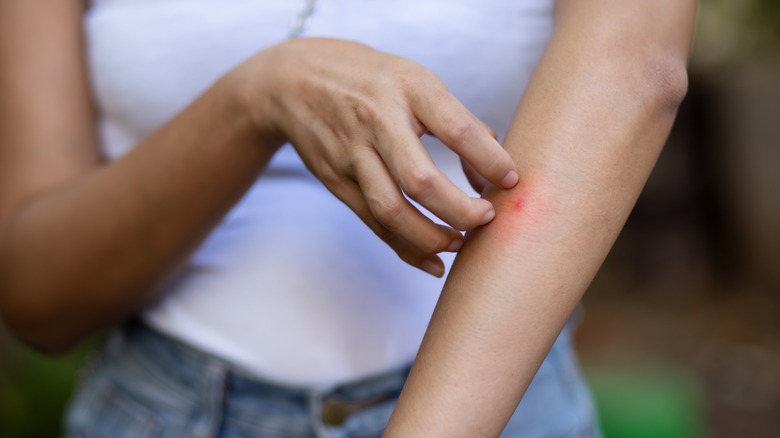The Spice You'll Want On Hand To Treat Bug Bites While Gardening
In the world of home remedies, a number of natural solutions exist designed to offer relief from various ailments. Bug bites, with their nagging itch and seemingly unending discomfort, are no exception. Among the effective remedies for these pesky bites is turmeric, a golden-yellow spice that has long been revered in traditional medicine.
When confronted with an itchy bug bite, consider the following simple steps to harness the healing potential of turmeric. First, blend 2 teaspoons of turmeric powder with water until a smooth paste forms. This consistency allows for easy and even application. Then, gently smear the paste onto the inflamed bite area, ensuring it's well-covered. Let this soothing concoction sit and work its magic for about 10 minutes. This duration is sufficient for the turmeric to penetrate the skin and provide relief. Wash off the paste using lukewarm water, revealing a potentially less inflamed and less irritated bug bite.
Why turmeric works so well on bug bites
The magic behind turmeric's effectiveness lies in its primary active component: curcumin. This compound is a powerhouse with significant anti-inflammatory properties. Curcumin reduces swelling, redness, and itchiness when applied to bug bites. But turmeric isn't just a reactive remedy – it's also proactive. Turmeric possesses insect-repellent properties. Turmeric oil has been shown to deter mosquitos, offering several hours of protection.
As with any home remedy, there are best practices to optimize the benefits and avoid potential pitfalls. For maximum potency, always opt for fresh turmeric powder. Over time, spices can lose their effectiveness, so regularly refreshed supplies are essential. Also, turmeric is notorious for its staining capability. Exercise caution when applying the paste. Protect clothing, and be prepared for a potential temporary skin tint. Additionally, be cautious if you have sensitive skin. Everyone's skin is unique, and if yours leans towards the sensitive side, conduct a patch test by applying a small amount of the paste to a discrete skin area. This step ensures you don't have an adverse reaction.

